Chopard L.U.C Flying T Twin
Chopard’s first flying tourbillon housed in an ultra-slim case with an automatic movement makes its debut at Baselworld 2019.
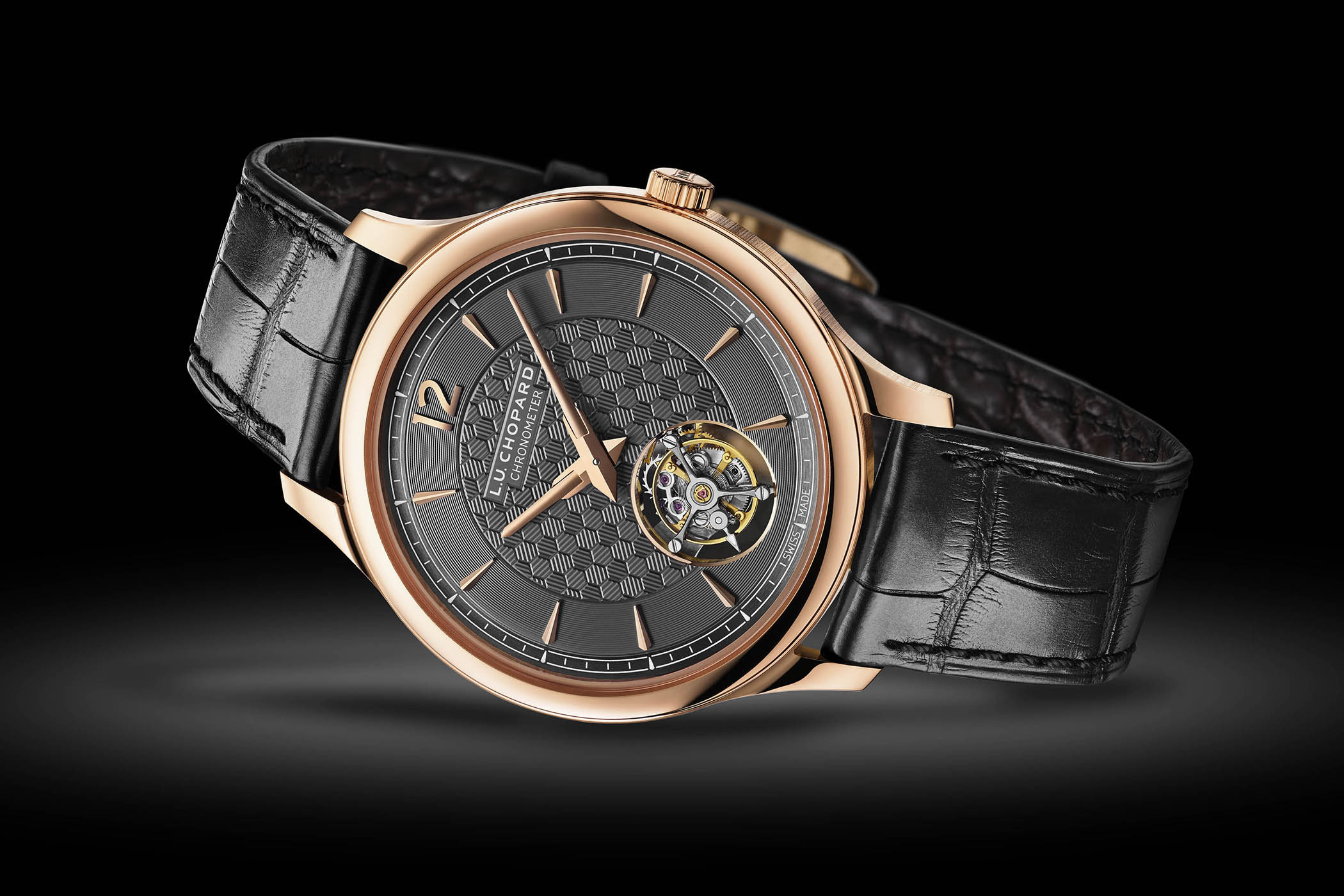
Countdown mode for Baselworld 2019 has commenced and Chopard presents its first flying tourbillon combined with an automatic movement on board the elegant rose gold L.U.C. Flying T Twin. The ultra-thin case is made from “Fairmined” gold and houses an even thinner automatic movement based on Chopard’s very first manufacture movement. Decorated with a sophisticated hand-guilloché dial, the watch is chronometer-certified and bears the Poinçon de Genève seal of quality. Collectors be warned, this is a limited edition of just 50 pieces.
Ultra-thin Fairmined Gold Case
For many gentlemen, the case of the L.U.C Flying T Twin flaunts perfect proportions. Crafted from 18k rose gold, the case measures 40mm in diameter and has an ultra-thin profile of just 7.2mm. That is actually 0.4mm thinner than the pre-Baselworld 2019 L.U.C XPS Twist watch we reviewed recently, and exactly the same height as the L.U.C XPS 1860, but with a flying tourbillon to boot.
Chopard’s commitment to using 100% ethical gold from July 2018 has positioned the brand as the current leader of sustainable luxury and is the main global purchaser of “Fairmined” gold, reserved exclusively for the production of its Grand Complication timepieces and some high jewellery models. The rose gold case is beautifully finished along the lines of all L.U.C models. The polished bezel contrasts with the vertical satin-brushed finish on the casebands and the gently sloping lugs have smooth, rounded corners for comfort.
Flying Tourbillon
A flying tourbillon is a regular tourbillon without an upper bridge spanning its circumference. Supported from underneath, this variation of tourbillon creates the impression that the tourbillon is flying and offers an unimpeded view of the carriage. Although the tourbillon escapement has been around since Breguet patented his invention in 1801, the flying tourbillon was invented by Alfred Helwig in 1920, an instructor at the German School of Watchmaking in Glashütte.
Compared to the hand-wound L.U.C models with regular, non-flying tourbillons, the industrial-looking rectangular bridge that is used to secure the tourbillons is not necessary and the aesthetic upgrade notable. Placed in a large aperture at 6 o’clock, and framed with a gilded ring to match the case colour, the flying one-minute tourbillon doubles up as a small seconds counter and is indicated with a small white triangle-shaped hand.
The solid gold dial has an anthracite grey surface obtained with a galvanic treatment, which in turn has been decorated by hand with sophisticated guilloché. The chapter ring bearing the gilded hour markers and numerals – applied and facetted – features an elegant snailed motif while the central area of the dial is decorated with an intriguing honeycomb motif that was first seen on the 2017 L.U.C XPS Officer edition. Almost like an Escher print in its abstract geometry, the hexagonal compartments of the honeycomb pattern are positioned at different angles adding a great deal of relief and playing with the light in unexpected ways. According to the brand, the pattern evokes a beehive and alludes to the first logo used by founder Louis-Ulysse Chopard. Like the hour markers, the Dauphine hands are also gilded to match the case metal.
Calibre 96.24-L
The new in-house automatic movement has been developed, produced and assembled in L.U.C’s workshops in Geneva. An evolution of Chopard’s original ultra-thin Calibre 96.01-L – which was first fitted on board the L.U.C XPS 1860 of 1997 – the new Calibre 96.24-L retains the same dimensions as its predecessor (27.40mm diameter x 3.30mm thickness) and features the same 22k gold micro-rotor. The ‘Twin’ appellation featured in the name of the watch refers to Chopard’s patented Twin technology capable of providing a 65-hour power reserve thanks to its two stacked barrels. To allow ample space for the tourbillon, the date window has been abandoned on this model. Finished to L.U.C’s high standards, the movement displays Côtes de Genève stripes, has been awarded the Geneva Seal of quality and is chronometer-certified.
A matte black alligator leather strap with cognac-coloured alligator lining (dyed with plant dyes) with an 18k rose gold pin buckle completes the package. The L.U.C Flying T Twin is a 50-piece limited edition – price will be EUR 109,000. More details at www.chopard.com.

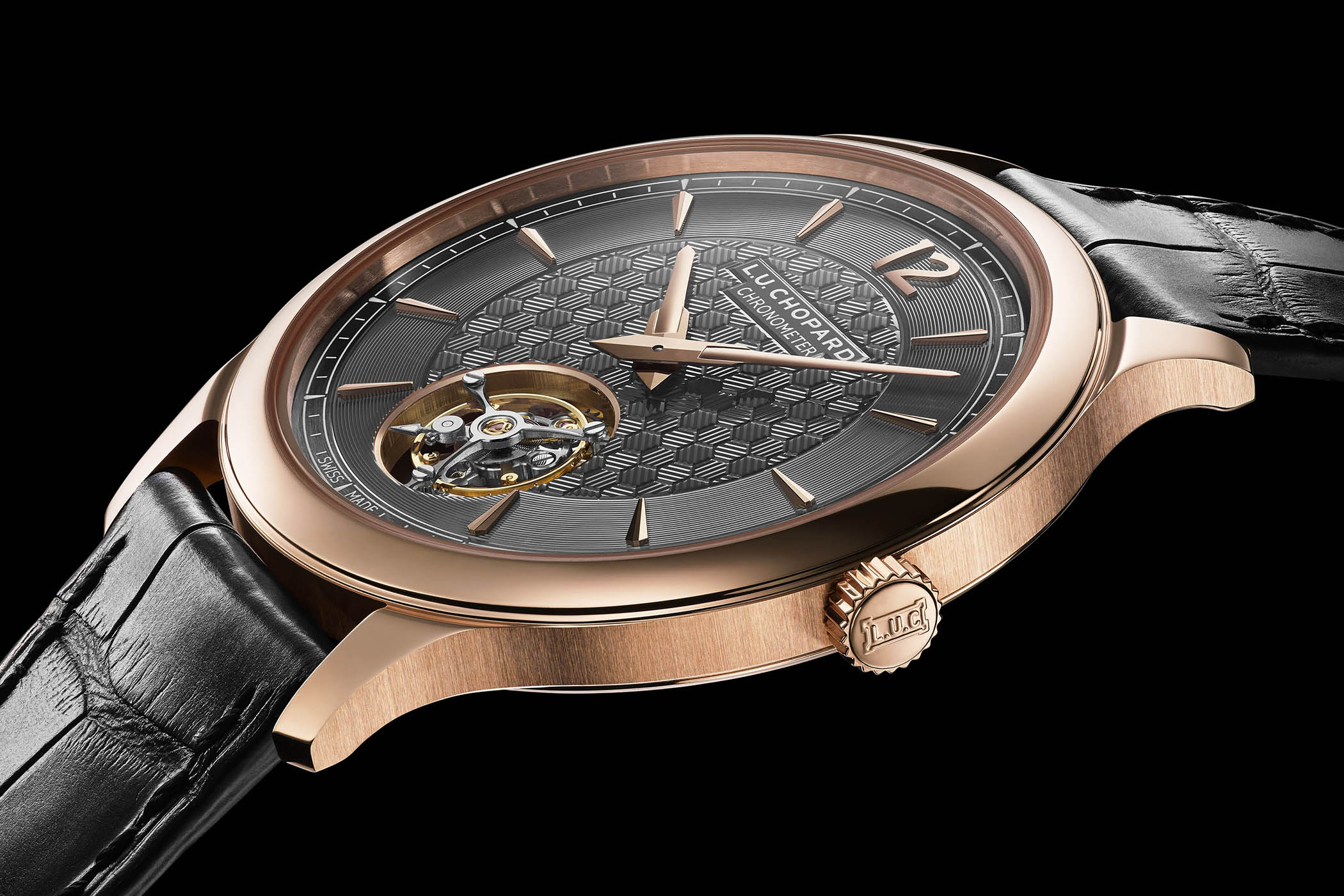
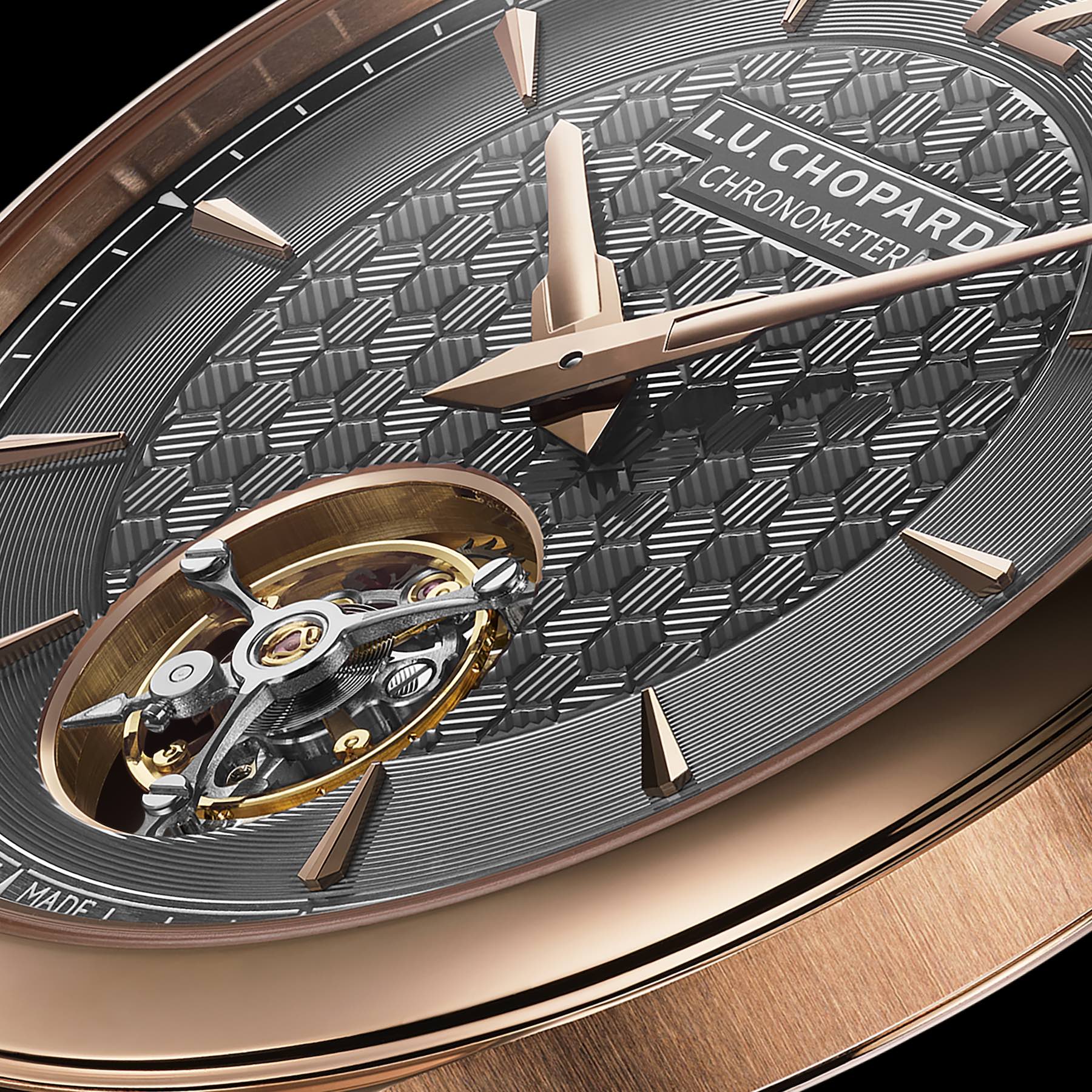
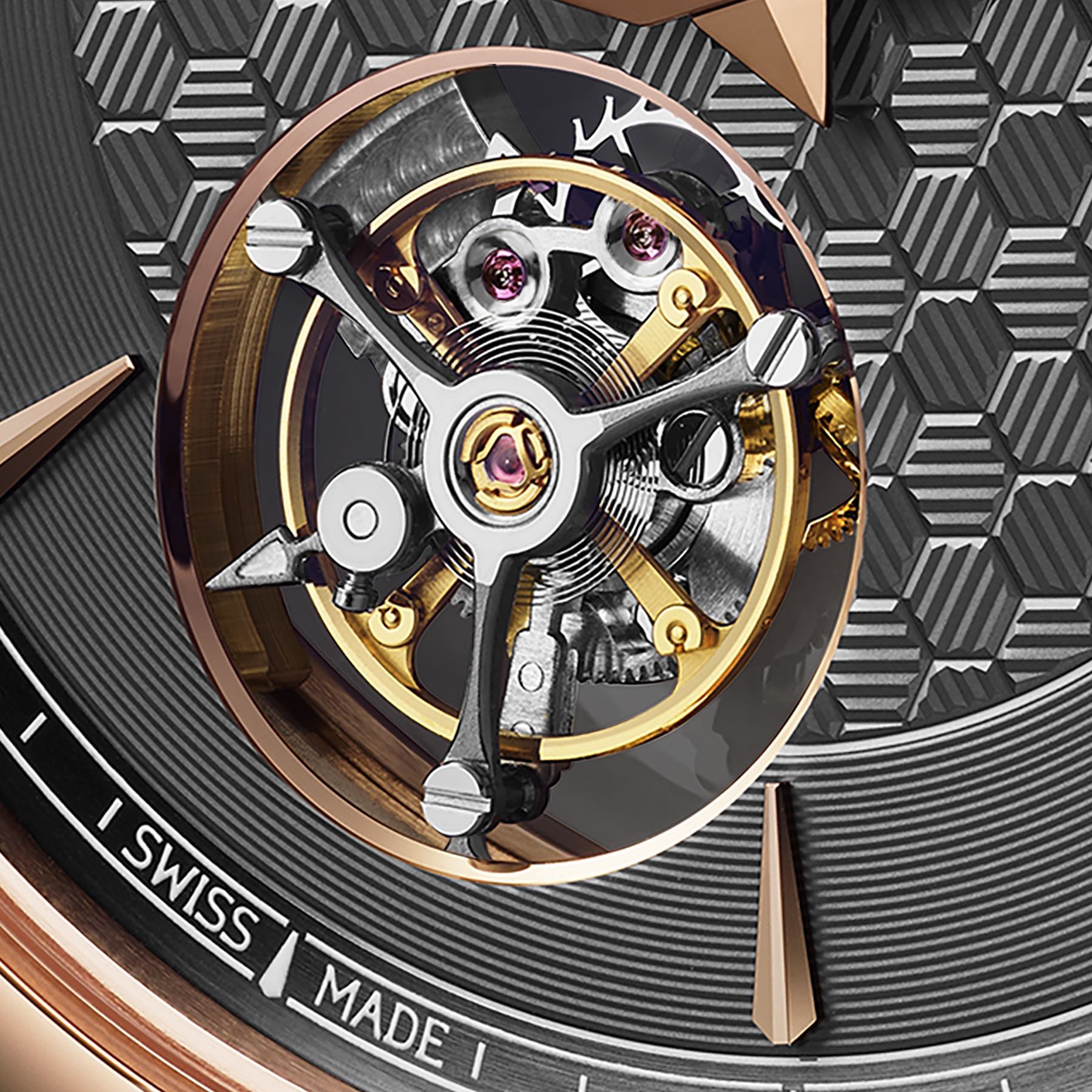
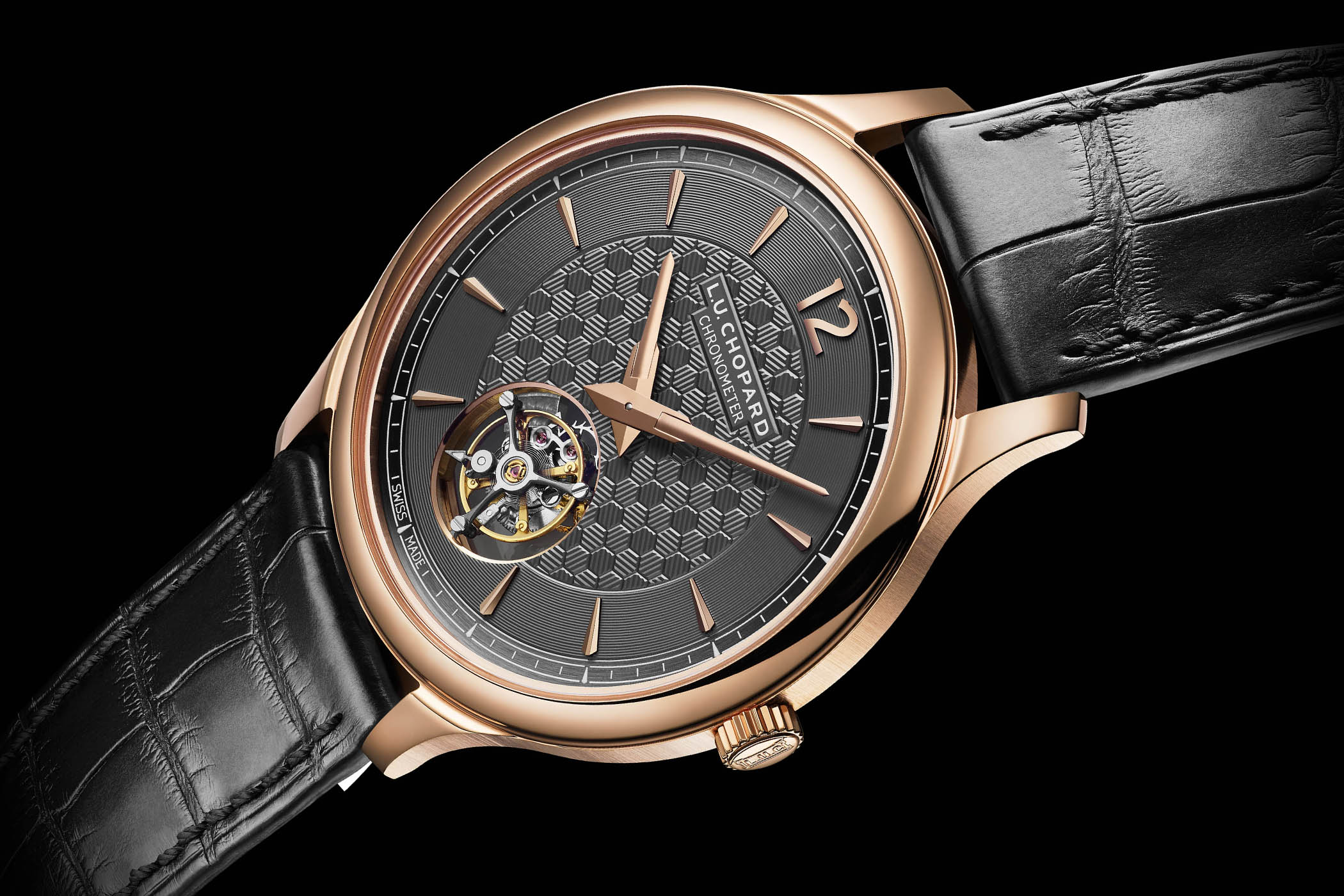




4 responses
The movement is assembled in Fleurier? I thought the Geneva Seal is only given to those assembled in the canton of Geneva.
Absolutely right @Gil.
L.U.C actually has two production sites, one in Fleurier (for movements certified Qualité Fleurier) and one in Geneva (hence why this one has the Geneva Seal).
Thank you for pointing this!
Sorry to be a pedant!
I did actually know about Chopard’s split between the two sites from reading Carlos Perez’s ‘The Flower of Neuchatel’ Timezone article from 2003.
The guilloche on the T Twin is very nice.
Who’s a pedant here…? No one!
Again, nice to have precise comments!